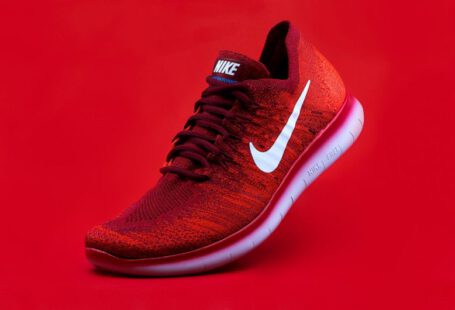**The Role of Upcycling in Sustainable Footwear**
Sustainability has become a significant concern in the fashion industry, with consumers increasingly seeking eco-friendly options. As a result, upcycling has emerged as a popular practice in the creation of sustainable footwear. By repurposing materials that would otherwise end up in landfills, upcycling plays a crucial role in reducing waste and minimizing the environmental impact of the footwear industry.
**Reimagining Materials**
One of the key aspects of upcycling in sustainable footwear is the reimagining of materials. Instead of using virgin resources, upcycled footwear is crafted from discarded materials such as old clothing, plastic bottles, and even industrial waste. These materials are given a new lease on life, transforming them into stylish and functional footwear that is both environmentally friendly and unique.
**Innovative Designs**
Upcycling allows for a high degree of creativity and innovation in footwear design. Designers are able to experiment with a wide range of materials, textures, and colors, resulting in footwear that stands out from traditional mass-produced options. From sneakers made from recycled ocean plastic to sandals crafted from upcycled denim, the possibilities are endless when it comes to creating sustainable footwear through upcycling.
**Environmental Impact**
The environmental impact of traditional footwear production is significant, with the industry contributing to pollution, deforestation, and resource depletion. Upcycling offers a more sustainable alternative by reducing the need for new materials and minimizing waste. By repurposing existing resources, upcycled footwear helps to conserve natural resources, reduce greenhouse gas emissions, and lessen the burden on landfills.
**Ethical Considerations**
In addition to its environmental benefits, upcycling also addresses ethical considerations within the footwear industry. By utilizing discarded materials, upcycled footwear reduces the demand for new resources that may be sourced through exploitative or unsustainable practices. This ethical dimension of upcycling ensures that consumers can make a positive impact with their purchasing choices, supporting brands that prioritize social and environmental responsibility.
**Consumer Awareness**
The growing popularity of upcycled footwear reflects a broader shift in consumer awareness and preferences. As more people become informed about the environmental and social implications of their purchasing decisions, there is a greater demand for sustainable options such as upcycled footwear. By choosing upcycled products, consumers can align their values with their consumption habits, contributing to a more sustainable and ethical fashion industry.
**The Future of Sustainable Footwear**
Looking ahead, upcycling is poised to play an increasingly significant role in the creation of sustainable footwear. With advancements in technology and design, upcycled footwear is becoming more mainstream and accessible to a wider audience. As consumers continue to prioritize sustainability in their purchasing decisions, the demand for upcycled footwear is likely to grow, driving innovation and creativity in the fashion industry.
**In Summary**
Upcycling offers a compelling solution to the environmental and ethical challenges facing the footwear industry. By reimagining materials, fostering innovative designs, and reducing the industry’s environmental impact, upcycled footwear represents a sustainable and stylish alternative to traditional options. As consumer awareness and demand for sustainable products continue to rise, upcycling is set to play a pivotal role in shaping the future of footwear towards a more sustainable and responsible direction.





